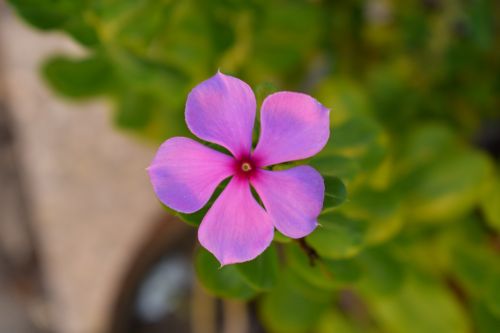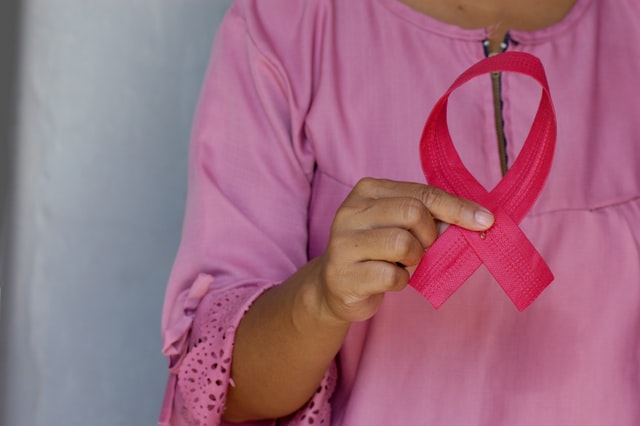Sadabahar is commonly known as Periwinkle and is easily found in India. It is a native plant of Madagascar and hence acquired the common name ‘Madagascar Periwinkle.’ It belongs to the family Apocynaceae and is botanically termed as Catharanthus roseus.
It is mostly used as an ornamental plant but not many of us are aware of the health benefits of the leaves of this plant. Sadabahar leaves may not only look attractive but have many hidden health and medicinal benefits and currently are the main focus of study in Ayurveda.
Sadabahar Plant: Interesting Facts

Sadabahar plant is approximately 1-2.5 meters in height and can be easily cultivated. Sadabahar flowers come in two varieties:
- Milky white in color
- Dark-pinkish purple in color
Sadabahar or Madagascar Periwinkle is also known to be one of the greatest gifts of Africa to the world. Several researchers including Robert Nobel and Charles Beer at the University of Western Ontario, Canada discovered that the extracts of this plant have the ability to kill white blood cells in our body.
Subsequently, their research gave rise to the novel anti-cancer properties found in the extracts. Another researcher named Gordon H. Svoboda worked on the Madagascar Periwinkle and found anti-diabetic properties in the extracts.
Chemical Composition of Sadabahar
The Pink Flower of Catharanthus (Sadabahar) constitutes mainly of –
- Linolenic acid ethyl ester (43.9 %)
- Hexadecanoic acid (6.8 %)
- Stearic acid (10.6 %)
- Phytol (7.3 %)
- phytol (29.6 %)
- Linolenic acid
- Ethyl ester (14.0 %)
- Limonene (34.1 %)
The White Flower of Cathanranhus consitutes mainly of –
- Geraniol (7.3 %)
- Citral (7.0 %)
- Limonene (23.2 %),
- Dodecyl alcohol (9.8 from the leaf, with limonene (37.2 %)
- Dotriacontane (16.1%)
It also consists of alkaloids such as Vinblastine and Vincristine and chemical constituents such as lochnerin, serpentine, ajmalicine, reserpine, catharanthine.
Health Benefits of Sadabahar Leaves
Sadabahar leaves have many health benefits and are used in Ayurveda. They are easily available and can cure many disorders or at least have the potential to do so.
Below I’ll be explaining a few potential health benefits of Sadabahar leaves:
1) Controls Blood Pressure and Hypertension

We are all exposed to the rat race where stress and managing stress has clearly become a tedious task for many. Stress is the precursor to many underlying issues such as hypertension which gradually advances to diabetes and cardiac disorders.
You can lower blood pressure with Sadabahar leaves as it acts as an anti-hypertensive agent which helps in maintaining blood pressure levels. It normalizes high blood pressure levels and augments the cardiovascular functioning of our body. The extracts of Sadabahar leaves and flowers are used as a cardiotonic and can cure mild to moderate hypertensive conditions.
Here are the various mechanisms through which Sadabahar leaves help in controlling blood pressure:
- Vasodilation: Sadabahar leaves contain compounds that have vasodilatory effects. Vasodilation refers to the widening of blood vessels, which can lead to reduced resistance in the arteries. When blood vessels are relaxed and dilated, blood can flow more easily, resulting in lower blood pressure.
- Antioxidant Properties: Sadabahar leaves are rich in antioxidants, such as flavonoids and polyphenols which help protect the blood vessels from damage caused by oxidative stress and inflammation. This protection can help maintain the flexibility and health of blood vessels, reducing the risk of hypertension.
- Smooth Muscle Relaxation: Compounds found in Sadabahar leaves may have a relaxing effect on smooth muscles, including those in the walls of blood vessels. This relaxation can contribute to lower blood pressure by reducing the constriction of blood vessels.
- Stress Reduction: High-stress levels can contribute to elevated blood pressure. Sadabahar leaves may help reduce stress and anxiety, indirectly contributing to better blood pressure control.
- Improved Circulation: By promoting better blood flow and reducing the resistance in blood vessels, Sadabahar leaves can enhance overall circulation. Improved circulation ensures that organs and tissues receive an adequate supply of oxygen and nutrients, which is essential for maintaining healthy blood pressure levels.
2) Improves Brain Function

The extract of Sadabahar leaves and flowers not only acts as a cardiotonic but also is a brain tonic. The extract brings about calmness, alertness, focus, attention, and increases mental productivity. It amplifies brain metabolism and improves thinking ability. The extract also wards off early aging of the neurons (brain cells). It contains compounds that help improve blood circulation, including blood flow to the brain. Improved blood flow ensures that the brain receives an adequate supply of oxygen and nutrients, which are essential for optimal brain function.
Additionally, some studies suggest that Sadabahar leaves contain compounds with potential neuroprotective properties. These compounds may help protect brain cells from damage and degeneration, which can be beneficial in conditions like Alzheimer’s disease and other neurodegenerative disorders.
3) Possesses Anti-Cancer Properties

The anticancer alkaloids Vinblastine and Vincristine extracted from the leaf of sadabahar are used in cancer treatment and show inhibitory effects on the growth of cancer cells. The alkaloids are administered to cure various human tumors. The alkaloid Vinblastine has increased the survival rate of Leukemia in children from 10% to 95% while the alkaloid Vincristine is used in the treatment of Hodgkin’s disease, a type of blood cancer.
Here’s an overview of their potential anti-cancer properties:
- Chemotherapy Agents Vincristine and Vinblastine are used as chemotherapy agents in the treatment of certain types of cancer, including leukemia, lymphoma, and some solid tumors. They work by disrupting the growth of cancer cells and preventing them from dividing.
- Anti-Tumor Activity: Research has shown that Vincristine and Vinblastine have anti-tumor properties. They interfere with microtubule formation in cancer cells, which is essential for cell division. By disrupting this process, these compounds can inhibit tumor growth.
- Combination Therapy: Vincristine and Vinblastine are often used in combination with other chemotherapy drugs to enhance their effectiveness in treating various cancers. This combination therapy approach is commonly used in clinical practice.
Please note that the use of periwinkle leaves or extracts as a natural remedy for cancer treatment is not recommended without medical supervision. Self-administering periwinkle products can be dangerous and may not provide the appropriate dosage or formulation required for effective cancer treatment.
Medical Miracle
Here is the story of little Angela who survived childhood Leukemia which was a fatal form of cancer until recent times. Angela was prescribed a special drug derived from periwinkle which included the alkaloid vinblastine. Without this drug, Angela wouldn’t have survived this dreadful disease and she and her family will always be thankful to the doctors. Angela’s beautiful curly hair locks fell out and she remained weak, fragile but was determined to go to school. Her courage inspired not only her classmates but also the teachers in the school and as a tribute to this little girl’s spirit, her classmates went bald to support her and fight this disease together.
4) Anti-Diabetic Properties

The aqueous solution of Sadabahar leaves is helpful in lowering blood glucose levels in the body. The extract shows hypoglycaemic properties that stimulate the production of insulin in the beta cells of the pancreas. The beta cells are responsible for the production of insulin, and the hormone insulin is required for the regulation of blood glucose levels in the body. Research suggests that periwinkle extracts may enhance insulin secretion from pancreatic beta cells which can be beneficial for individuals with type 2 diabetes who may have reduced insulin production.
How to control diabetes with Sadabahar leaves
Sadabahar leaves can be used in the following ways to control diabetes in the body:
- Fresh, dry Sadabahar leaves should be taken and made into powder. This powder must be stored in a glass container. Every morning after getting up, take one 1 tsp of this powder and mix it with water or fresh fruit juice. This must be consumed on an empty stomach.
- Take 2-3 Sadabahar leaves and chew them to prevent a spike in glucose levels in the body.
5) Boosts Immunity

Sadabahar leaves contain various vitamins and minerals, including vitamin C, which is known for its immune-boosting properties. While the vitamin C content in periwinkle leaves is not as high as in some other plants like citrus fruits, it can still contribute to overall health. It is also known to relax respiratory disorders like Asthma, cold, cough, bronchitis, etc. by facilitating the removal of mucous deposits from the respiratory tract for easy breathing. It provides relief from a sore throat, chest congestion, and cold.
6) Skin benefits

Apart from curing a lot of other disorders, Sadabahar has proven to enhance skin health and protects the skin from UV damage. It also helps in curing various other skin problems like aging, pigmentation, dark circles, pimples, acne, etc.
Sadabahar leaves are sometimes used in traditional remedies to soothe skin irritations, rashes, or insect bites. Their potential anti-itch and anti-inflammatory effects may offer relief from discomfort associated with these issues. Some individuals also use sadabahar leaf extracts or pastes as part of their skincare routine to manage acne.
You can use Sadabahar leaves as a face mask by mixing it with neem leaf powder, turmeric powder, and rose water. Apply it on the face and keep it for a few minutes. Rinse using cold water to see the difference.
Can I grow Sadabahar plants at home?
Yes, you can grow Sadabahar plants at home in well-draining soil with moderate sunlight. It’s best to start from seeds or cuttings. Ensure the soil is kept consistently moist but not waterlogged. Pruning and deadheading can help promote healthy growth and flower production.
Here are a few things that you need to keep in mind:
Soil Selection: Sadabahar plants thrive in well-draining soil. You can use a good quality potting mix or prepare your own by mixing garden soil, sand, and organic compost. Ensure the soil is loose and allows excess water to drain away, preventing waterlogged roots.
Sunlight Requirements: These plants require moderate to full sunlight. Place your Sadabahar plant in a location where it receives at least 4-6 hours of sunlight per day. A sunny windowsill or a spot in your garden that gets adequate sunlight is ideal.
Propagation Methods: You have two primary options for propagating Sadabahar: from seeds or cuttings.
- Seeds: You can start Sadabahar from seeds. Plant the seeds in small pots filled with the well-draining soil mix. Keep the soil consistently moist until the seeds germinate. Once the seedlings are a few inches tall, you can transplant them to their permanent location.
- Cuttings: Another method is to take stem cuttings from a healthy Sadabahar plant. Trim a healthy, non-flowering stem, remove the lower leaves, and place it in a small pot with well-draining soil. Keep the soil moist, and roots should develop in a few weeks.
Watering: Sadabahar plants prefer consistently moist soil but don’t like to sit in waterlogged conditions. Water the plant when the top inch of the soil feels dry to the touch. Ensure the pot has proper drainage to prevent water accumulation at the bottom.
Pruning and Deadheading: Pruning and deadheading are essential for maintaining healthy growth and encouraging continuous flower production.
- Pruning: Trim back leggy or overgrown stems to promote bushier growth. You can also prune to shape the plant as desired.
- Deadheading: Remove spent flowers (the ones that have withered) regularly to encourage the plant to produce more blooms.
Fertilization: Sadabahar plants benefit from a balanced, all-purpose liquid fertilizer. Apply it every 2-4 weeks during the growing season (spring and summer). Follow the manufacturer’s instructions for the specific fertilizer you use.
Conclusion
Hope you’re now well aware of of the potential health benefits of Sadabahar leaves and will incorporate them in your life as and when required. Sadabahar has been established to be one of the most beneficial plants which help in curing innumerable disorders. Its anti-cancer, anti-diabetic, and anti-aging properties have gained a lot of popularity in Ayurveda and medicine.
FAQs
Q1) What are the side-effects of Sadabahar leaves?
Ans) Sadabahar leaves must be consumed in a limited amount as excessive consumption can result in constipation, extremely low blood sugar levels, etc. Don’t take more than 3-4 leaves in a day.
Q2) How do we grow and take care of the Sadabahar plant at home?
Ans) Sadabahar plants can be easily grown at home in well-drained soils. The ideal temperature for the growth of the Sadabahar plant is about 65° F and above. The plants start rooting in about 3-4 weeks.
Q3) What are the additional benefits of Sadabahar?
Ans) The active constituents in Sadabahar also help in curing chest pains, toothache, vaginal discharge, tonsillitis, etc.
Q4) Can Sadabahar leaves be used to improve cardiovascular health?
Ans) Yes, Sadabahar leaves have been studied for their potential in improving cardiovascular health. They may help lower blood pressure and reduce the risk of heart diseases due to their alkaloid content, which has vasodilatory effects.
Q5) Are there any side effects associated with the consumption of Sadabahar leaves?
Ans) While Sadabahar leaves are generally safe when consumed in moderate amounts for their medicinal properties, excessive consumption may lead to digestive issues like diarrhea. It’s advisable to consult a healthcare professional before using them for medicinal purposes.